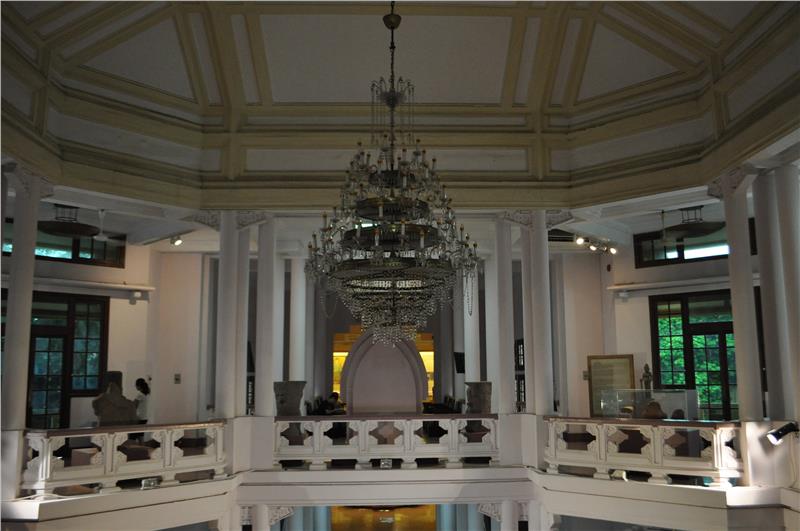National Museum of Vietnamese History is home to store artifacts reflecting the culture, the developing history of the country and people in Vietnam. Located at No.1 Trang Tien Street, Hoan Kiem District, Hanoi, the museum retains unique Indochina architectural style. It also houses the large number of precious artifacts such as Dong Son bronze drum, Bat Trang pottery, statues of Shiva and wooden stakes in Bach Dang Battle... The artifacts, historical documents in the museum will offer tourists the full and comprehensive knowledge about the historical periods of Vietnam country from prehistoric times until the period of struggling for national construction and defense. National Museum of Vietnamese History is worth one of the impressive tourist attractions in Hanoi alluring the great number of both domestic and international tourists.

In the system of the national museums in Vietnam, Museum of Vietnamese History was established earliest on the basis of inheriting Finotdo Louis Museum of École Française d'Extrême - Orient built by the French from 1926 to 1932. This is the place showcasing antiques collected from countries in South East Asia. In 1958, Government of Vietnam officially took over and switched from Museum of Art into Vietnam history Museum. The museum is designed by 2 architects, namely C.Batteur and E.Hebrard, which can be regarded as a major representative of Indochina architectural style, a style combining the values of French architecture with one of the local architecture. Discovering National Museum of Vietnamese History is definitely one of the most unforgettable things to do in Hanoi.

The exhibiting system of Museum of Vietnamese History consists of 4 focus sections, namely Vietnam in the prehistoric period, Vietnam from the first time establishing the country to Tran Dynasty, Vietnam from Ho Dynasty to August Revolution 1945 and galleries of Champa stone sculptures. National Museum of Vietnamese History is divided into two premises: Zone A located at 1 Trang Tien street, Hanoi opposite with Zone B situated at 25 Tong Dan street. With an area of 4,000 m2 and approximately 10,000 artifacts, the main exhibiting system of the museum reflects the stages of the development and historical events in Vietnam. National Museum of Vietnamese History is worth one of the impressive tourist Hanoi attractions alluring numerous both domestic and international tourists.

The most prominent in zone A is the building painted with yellow, which retains the architectural style combining between the values of French architecture with the local architectural values commonly found in the traditional religious architectural works in Vietnam. In particular, strongly impressing tourists when visiting the 1st floor of Zone A is 7 bronze drums: Dong Son bronze drum, Ngoc Lu bronze drum, Nong Cong bronze drum or Thanh Vinh bronze drum... placed around the large pillar carved crane and ancient Vietnamese people, the famous cultural icons in Vietnam. Keeping moving into the museum, tourists will catch the space displaying precious objects of religious works from Tran Dynasty and historical relics, materials, architectural ornaments and pictures of the famous relics, namely Pho Minh Pagoda and Tower (Nam Dinh province), Kiep Bac Temple (Hai Duong province), Binh Son Tower (Vinh Phuc province)...
The museum also houses two fixed thematic galleries: Champa stone artistic carvings and Oc Eo culture - Phu Nam. The Champa stone collection is presented in an open space in the 2nd floor hallway of octagonal-shaped room looking down the hall of the museum. The collections are introduced in chronology stretching from the 7th to 13th century with more than 50 specimens collected from the provinces in Vietnam such as Quang Binh, Quang Nam, Binh Dinh... In particular, unlike Zone A of National Museum of Vietnamese History, tourists going to Zone B at Tong Dan street will visit from the 2nd floor down to 1st floor. It is home to 29 small room preserving materials, objects and pictures of the struggle for national independence from 1858 to 1945 and the period of 30 years of war protecting the independence and unification (1945-1975). The journey of exploring Hanoi travel will be definitely much more impressive when tourists set foot on the museum.

National Museum of Vietnamese History is home to keep and display the precious tangible cultural heritages of the country. It introduces Vietnamese history through rare and precious artifacts helping tourists understand the long-lasting cultural history as well as the process of building and defending Vietnam nation. These collections, thematic galleries of Vietnam history contribute to bring the museum to become one of the most fascinating museums in Hanoi. Thanks to its unique values, National Museum of Vietnamese History displays its significant contributions in promoting the image of Hanoi tourism closer to tourists both at home and abroad.
